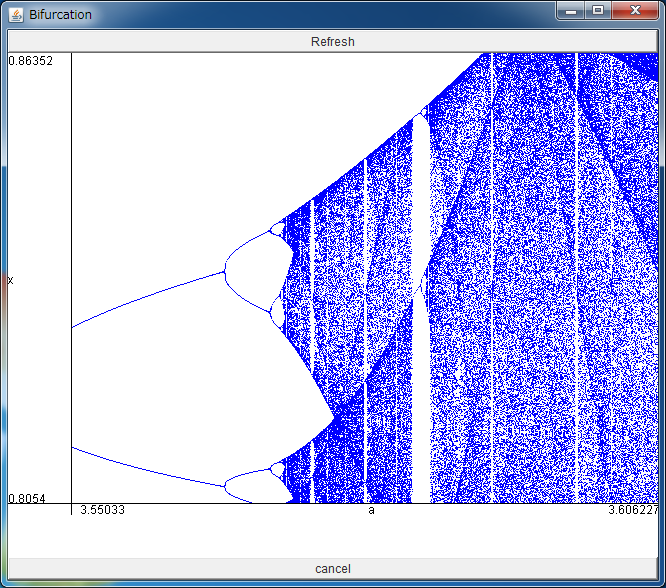Bifurcation Diagram of Logistic Map

After downloading bifurcation.jar, please execute it by double-clicking, or typing "java -jar bifurcation.jar".
You can expand the area by dragging the field with your mouse.
If the above application does not start, please install OpenJDK from adoptium.net.